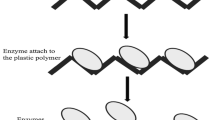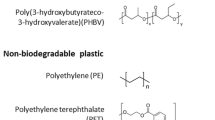Abstract
Environmental DNA (eDNA) samples that are collected from remote locations depend on rapid stabilization of the DNA. The degradation of eDNA in water samples is minimized when samples are stored at ≤ 4 °C. Developing a preservation technique to maintain eDNA integrity at room temperature would allow a wider range of locations to be sampled. We evaluated an ethanol and sodium acetate solution to maintain the integrity of the DNA samples for the time between collection and lab testing. For this evaluation, replicate water samples taken from a tank housing Asian carp were placed on ice or held at room temperature. At both temperatures, water samples were left untreated or were preserved with an ethanol and sodium acetate solution (EtOH–NaAc). Every day for 6 days following collection, a subset of the samples was removed from each preservation method and DNA was extracted and nuclear and mitochondrial markers were assayed with qPCR. Results showed comparable persistence of DNA between iced samples without the EtOH–NaAc treatment and samples that received EtOH–NaAc treatment that were kept at room temperature. We found that DNA can be amplified from preserved samples using an EtOH–NaAc solution after up to 7 days at room temperature.


Similar content being viewed by others
References
Albers CN, Jensen A, Bælum J, Jacobsen CS (2013) Inhibition of DNA polymerases used in Q-PCR by structurally different soil-derived humic substances. Geomicrobiol J 30:675–681
Bohmann K, Evans A, Gilbert MTP et al (2014) Environmental DNA for wildlife biology and biodiversity monitoring. Trends Ecol Evol 29:358–367
Bustin BA, Benes V, Garson JA et al (2009) The MIQE guidelines: minimum infortation for publication of quantitative real-time PCR experiments. Clin Chem 55(4):611–622
Dejean T, Valentini A, Duparc A et al (2011) Persistence of environmental DNA in freshwater ecosystems. PLoS ONE 6:e23398
Eichmiller JJ, Best SE, Sorensen PW (2016) Effects of temperature and trophic state on degradation of environmental DNA in lake water. Environ Sci Technol 50:1859–1867
Ficetola GF, Miaud C, Pompanon F, Taberlet P (2008) Species detection using environmental DNA from water samples. Biol Lett 4:423–425
Gentry-Shields J, Wang A, Cory RM, Stewart JR (2013) Determination of specific types and relative levels of QPCR inhibitors in environmental water samples using excitation–emission matrix spectroscopy and PARAFAC. Water Res 47:3467–3476
Goldberg CS, Sepulveda A, Ray A, Baumgardt J, Waits LP (2013) Environmental DNA as a new method for early detection of New Zealand mudsnails (Potamopyrgus antipodarum). Freshwater Sci 32:792–800
Hartman D (2011) Perfecting your spread plate technique. J Microbiol Biol Educ 12:204–205
Jane SF, Wilcox TM, McKelvey KS et al (2014) Distance, flow and PCR inhibition: eDNA dynamics in two headwater streams. Mol Ecol Res 15:216–227
Jerde CL, Mahon AR, Chadderton WL, Lodge DM (2011) “Sight-unseen” detection of rare aquatic species using environmental DNA. Conserv Lett 4:150–157
Larionov A, Krause A, Miller W (2005) A standard curve based method for relative real time PCR data processing. BMC Bioinformatics 6:62
Merkes CM, McCalla SG, Jensen NR, Gaikowski MP, Amberg JJ (2014) Persistence of DNA in Carcasses, Slime and Avian Feces may affect interpretation of environmental DNA data. PLoS ONE 9:e113346
Nielsen KM, Johnsen PJ, Bensasson D, Daffonchio D (2007) Release and persistence of extracellular DNA in the environment. Environ Biosaf Res 6:37–53
Piaggio AJ, Engeman RM, Hopken MW et al (2014) Detecting an elusive invasive species: a diagnostic PCR to detect Burmese python in Florida waters and an assessment of persistence of environmental DNA. Mol Ecol Res 14:374–380
Pilliod DS, Goldberg CS, Arkle RS, Waits LP (2013) Estimating occupancy and abundance of stream amphibians using environmental DNA from filtered water samples. Can J Fish Aquat Sci 70:1123–1130
Renshaw MA, Olds BP, Jerde CL, McVeigh MM, Lodge DM (2015) The room temperature preservation of filtered environmental DNA samples and assimilation into a phenol–chloroform–isoamyl alcohol DNA extraction. Mol Ecol Resour 15:168–176
Robertson K, Minich J, Bowman A, Morin P (2013) A thin soup: extraction and amplification of DNA from DMSO and ethanol used as preservative for cetacean tissue samples. Conserv Genet Res 5:929–933
Santas AJ, Persaud T, Wolfe BA, Bauman JM (2013) Noninvasive Method for a Statewide Survey of Eastern Hellbenders Cryptobranchus alleganiensis Using Environmental DNA. Int J Zool 2013:1–6
Smith CI, Chamberlain AT, Riley MS et al (2001) Neanderthal DNA: Not just old but old and cold? Nature 410:771–772
Takahara T, Minamoto T, Doi H (2013) Using environmental DNA to estimate the distribution of an invasive fish species in ponds. PLoS ONE 8:e56584
Takahara T, Minamoto T, Doi H (2015) Effects of sample processing on the detection rate of environmental DNA from the common carp (Cyprinus carpio). Biol Conserv 183:64–69
Thomsen PF, Kielgast JOS, Iversen LL et al (2012) Monitoring endangered freshwater biodiversity using environmental DNA. Mol Ecol 21:2565–2573
Valiere N, Taberlet P (2000) Urine collected in the field as a source of DNA for species and individual identification. Mol Ecol 9:2150–2152
Williams KE, Huyvaert KP, Piaggio AJ (2016) No filters, no fridges: a method for preservation of water samples for eDNA analysis. BMC Res Notes 9:298
Yamanaka H, Minamoto T, Matsuura J et al (2017) A simple method for preserving environmental DNA in water samples at ambient temperature by addition of cationic surfactant. Limnology 18:233–241
Acknowledgements
We thank Dr. Shawn Crimmins for the assistance with statistical analyses. We thank Justin Smerud for aiding in water sample collection. This project was funded through the Great Lakes Restoration Initiative and the U.S. Geological Survey Invasive Species Program.
Author information
Authors and Affiliations
Corresponding author
Ethics declarations
Conflict of interest
The authors declare that they have no conflict of interest.
Rights and permissions
About this article
Cite this article
Ladell, B.A., Walleser, L.R., McCalla, S.G. et al. Ethanol and sodium acetate as a preservation method to delay degradation of environmental DNA. Conservation Genet Resour 11, 83–88 (2019). https://doi.org/10.1007/s12686-017-0955-2
Received:
Accepted:
Published:
Issue Date:
DOI: https://doi.org/10.1007/s12686-017-0955-2




